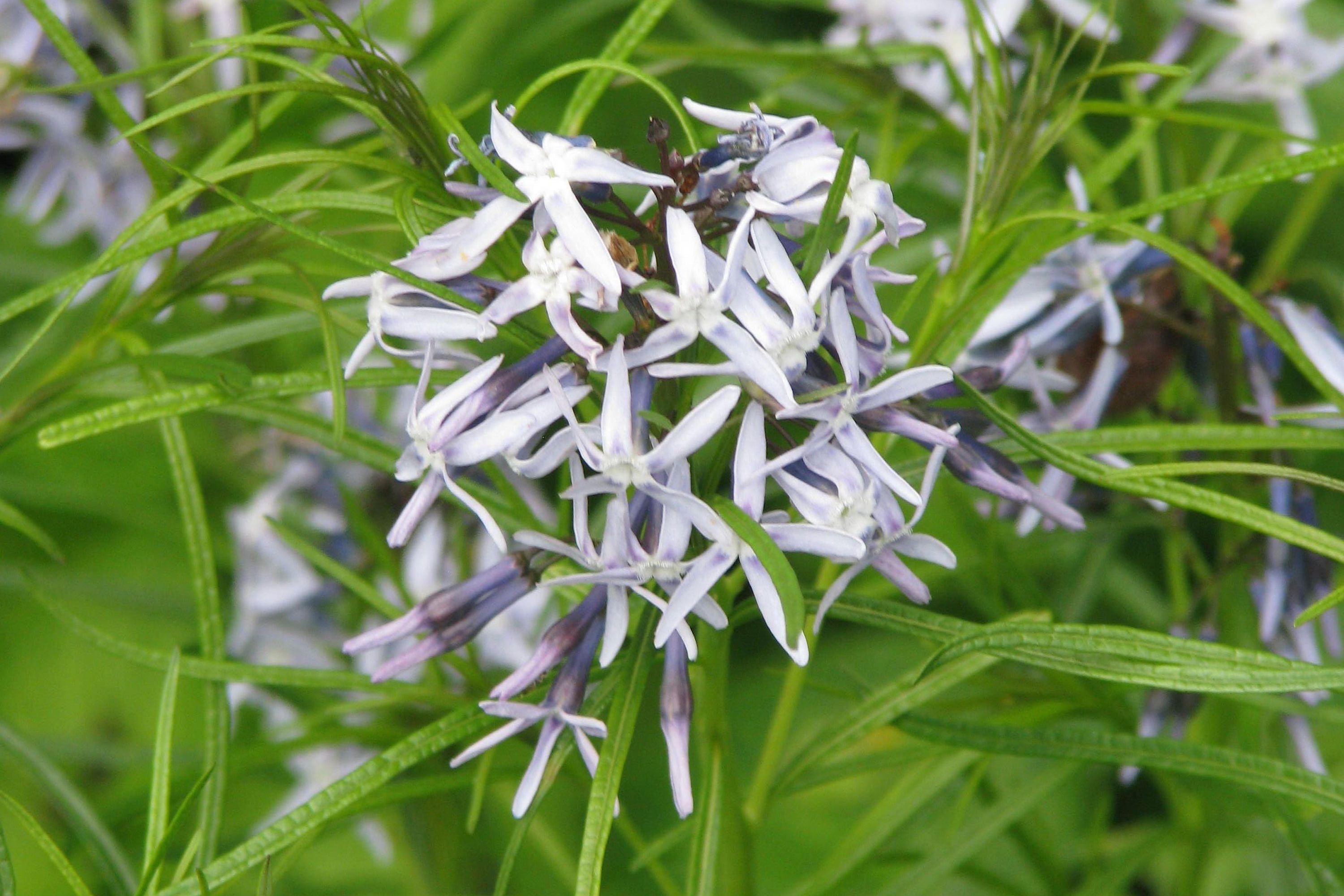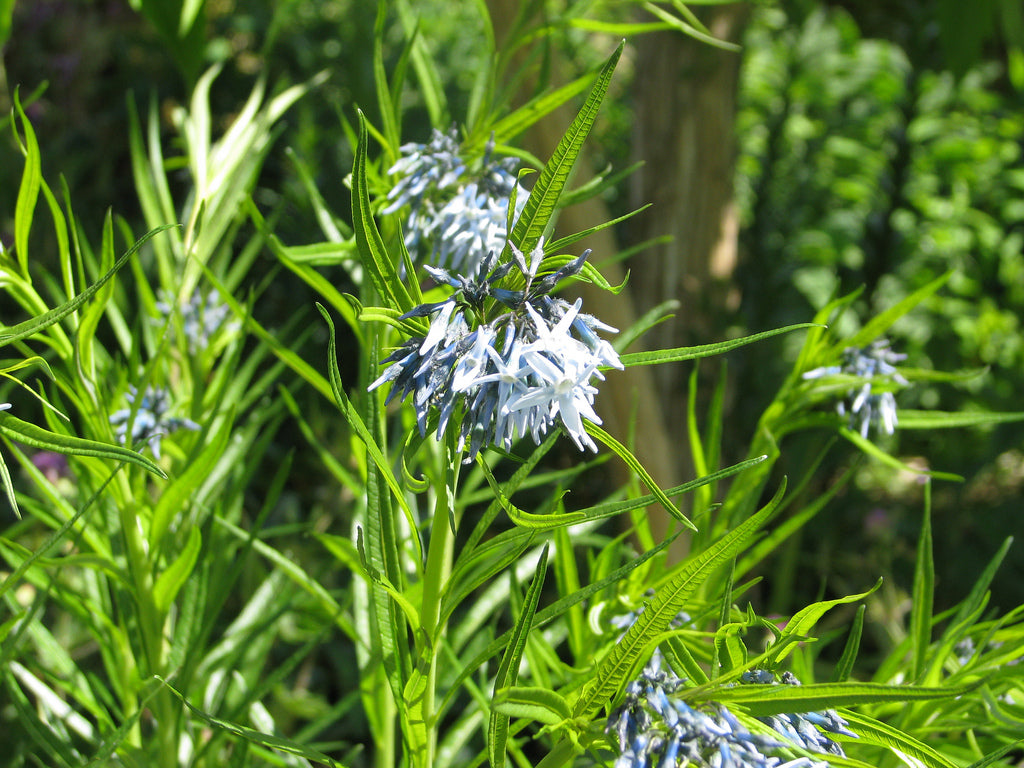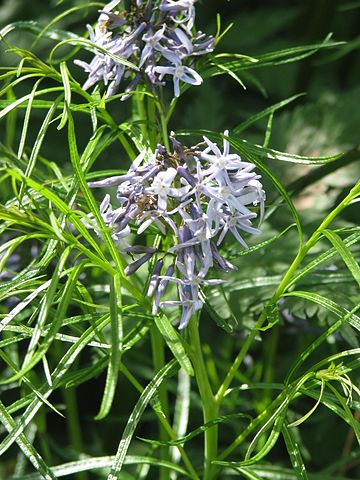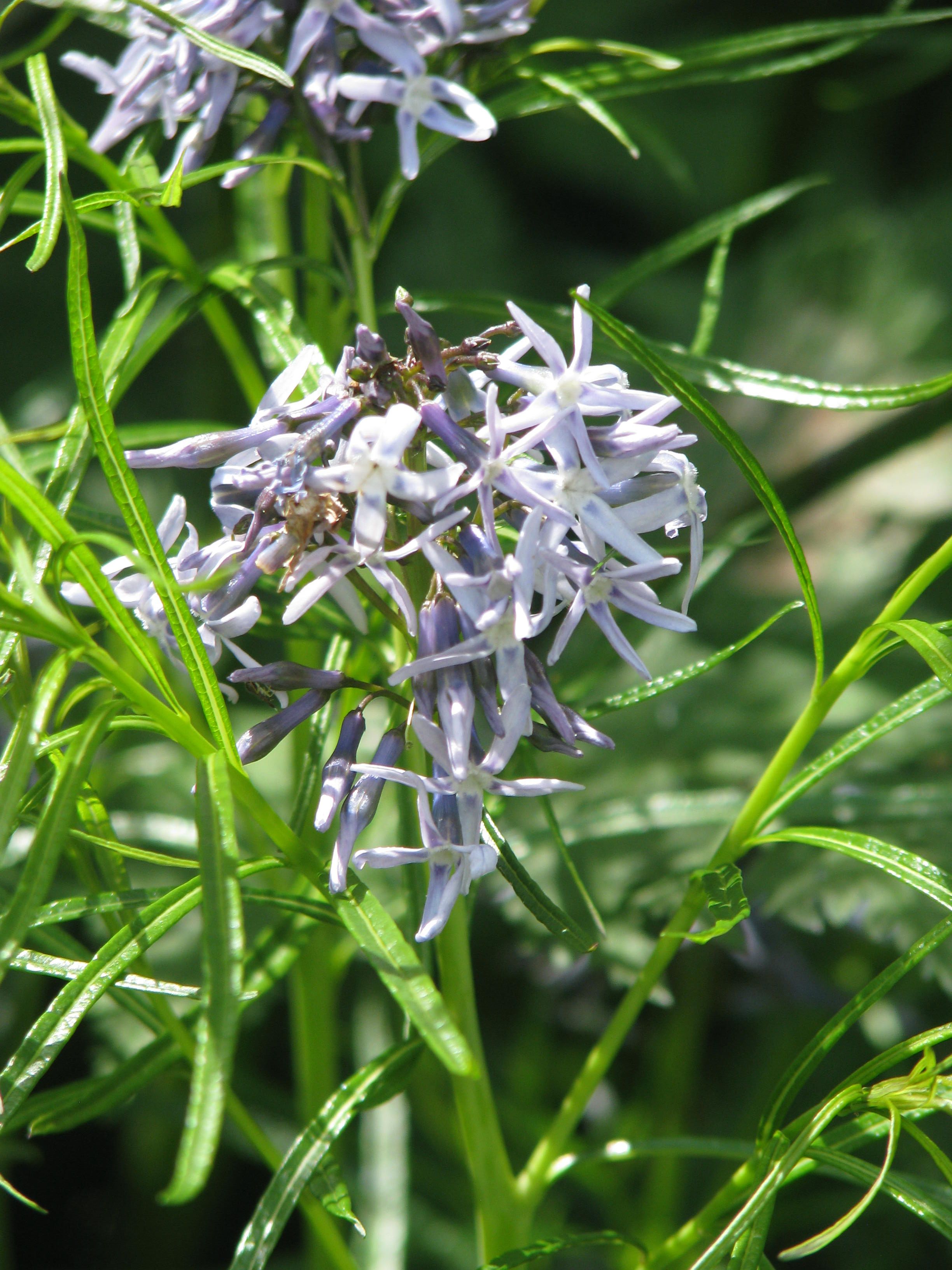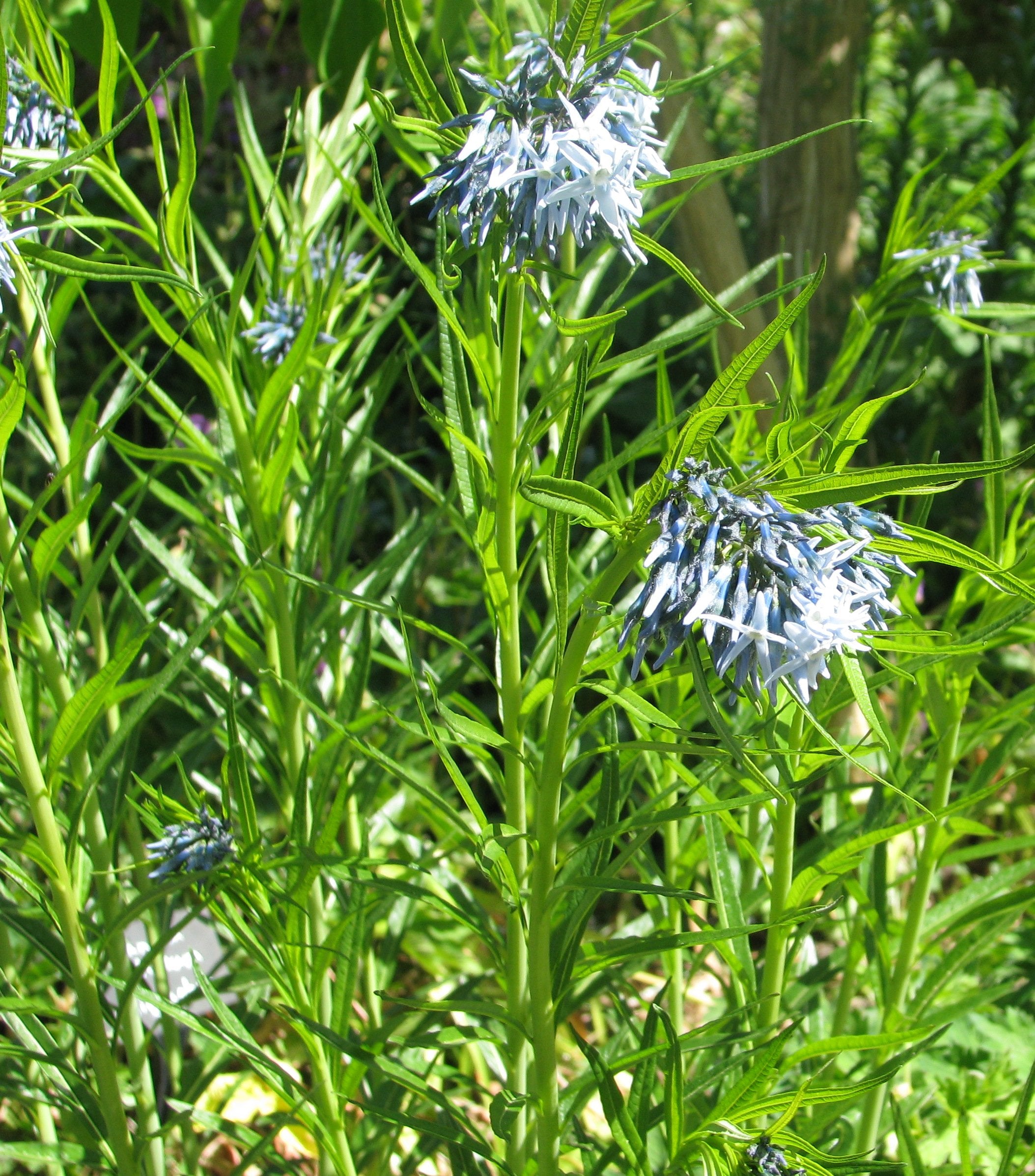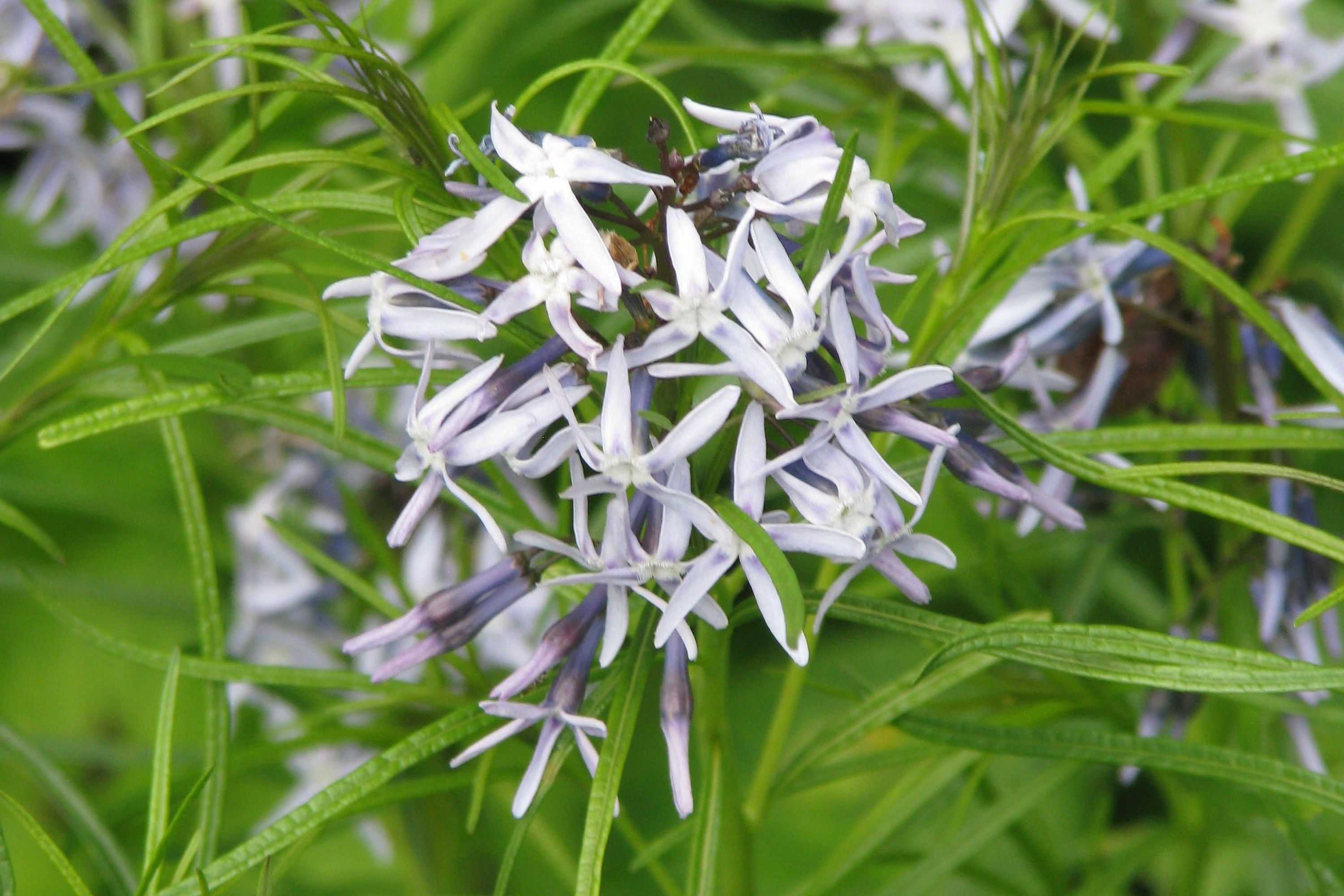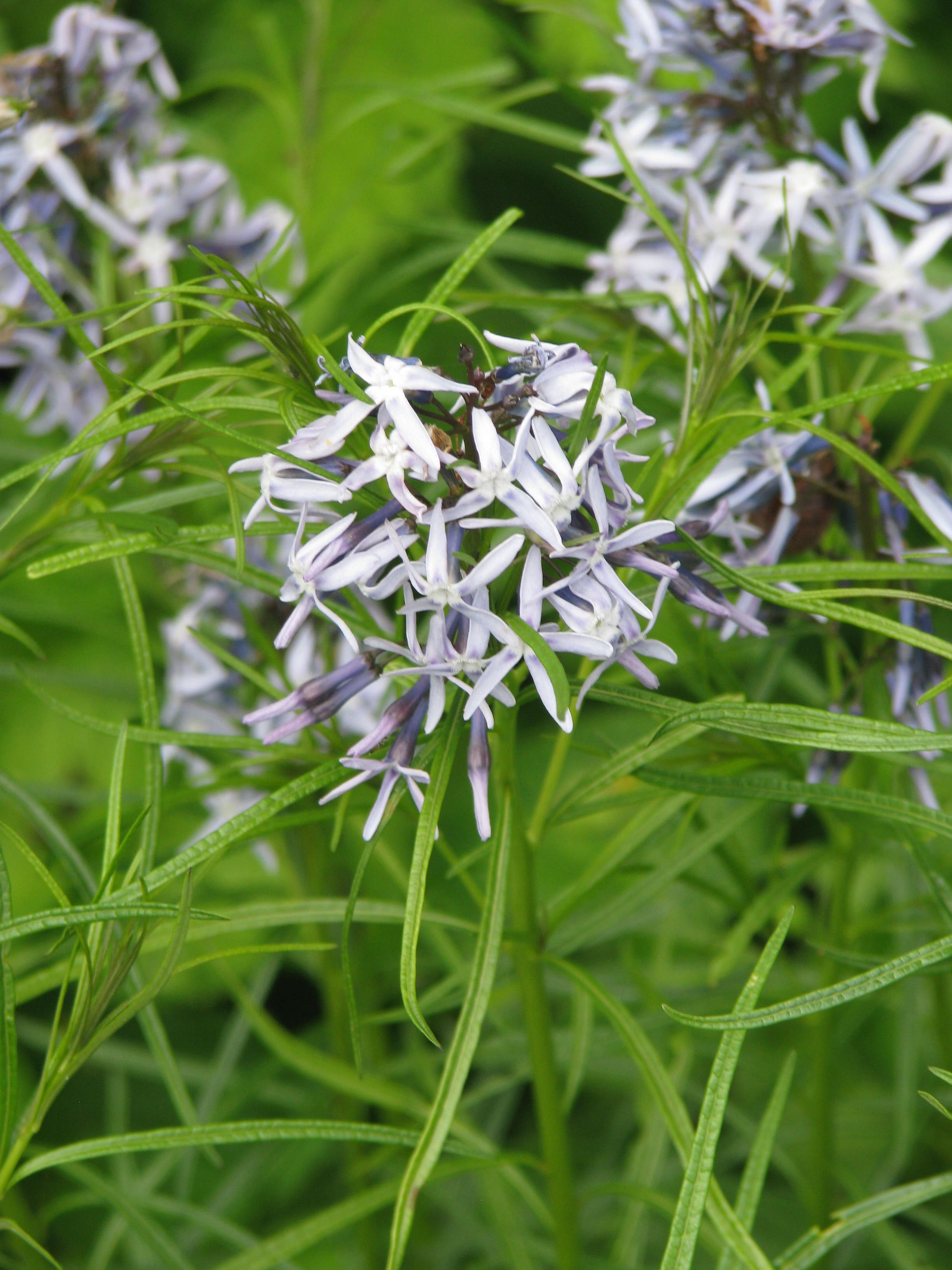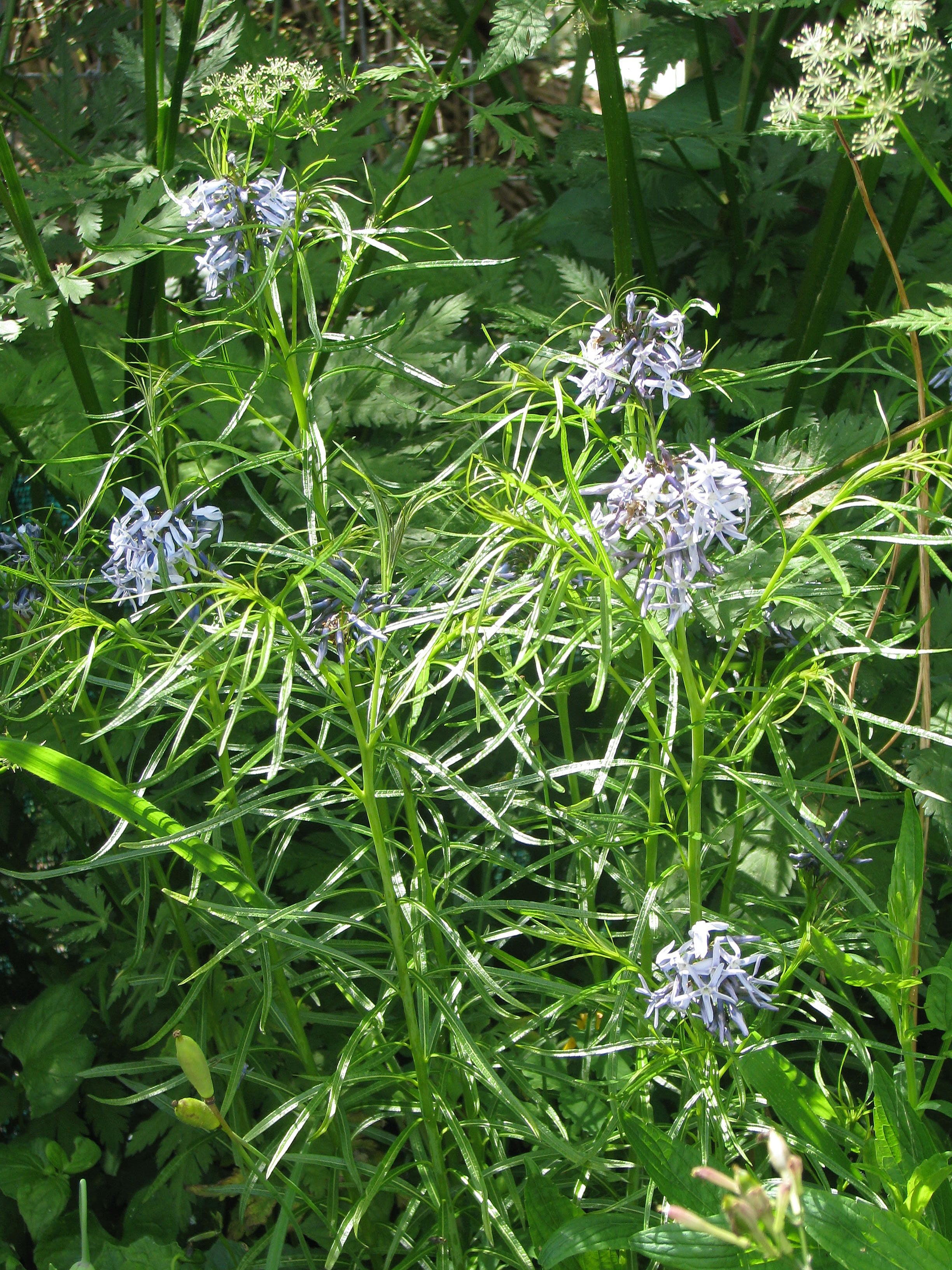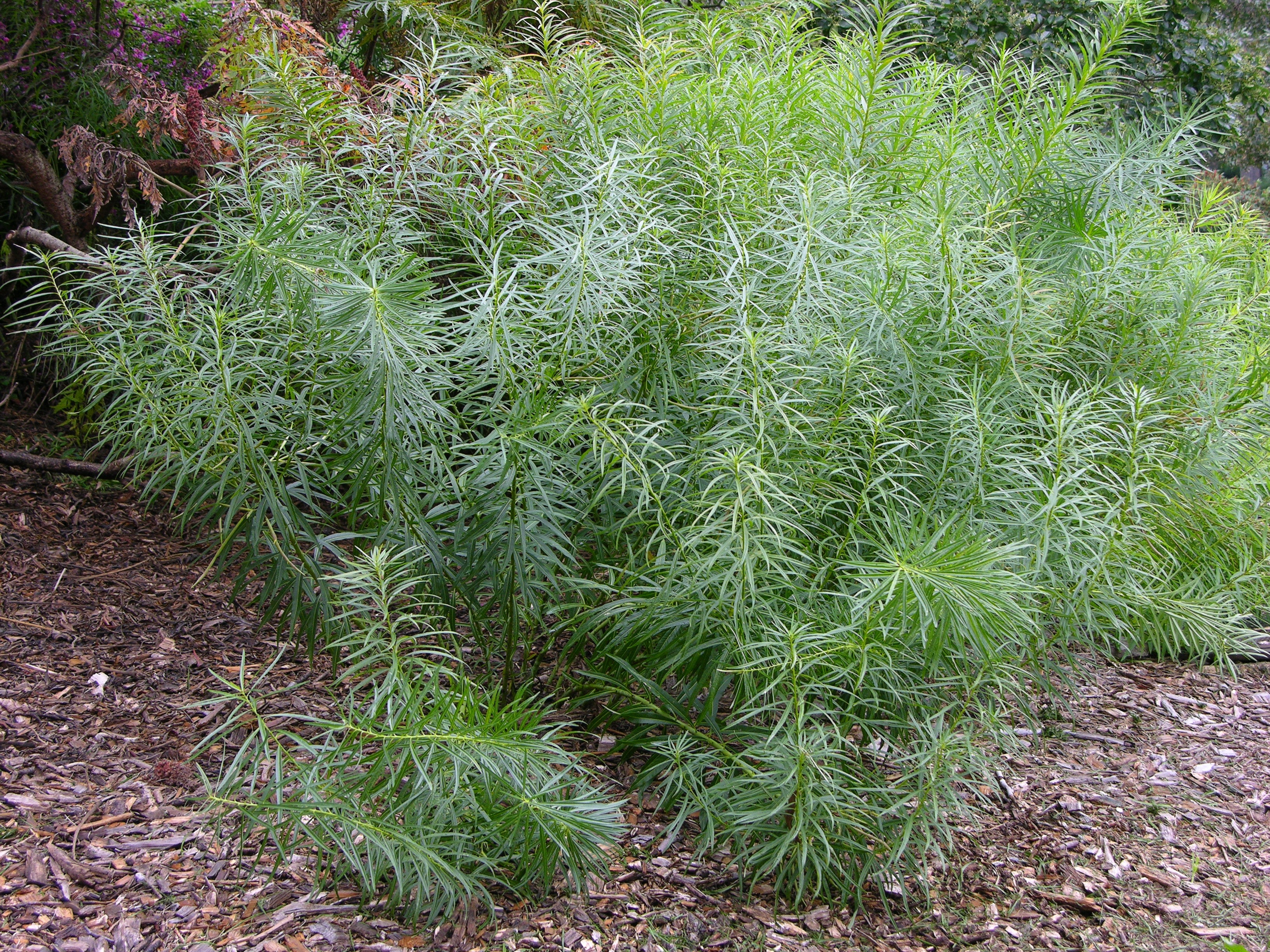Amsonia hubrichtii
Approx. 0.5 litre pot
About this cultivar:
Amsonia hubrichtii, commonly called bluestar, Arkansas amsonia or Hubricht's amsonia, is an uncommon perennial that is native to the Ouachita Mountains in central Arkansas. It is very similar in appearance to the Missouri native Amsonia ciliata, except the leaves of A. hubrichtii are more narrow and thread-like and the emerging foliage lacks conspicuous hairiness. An erect, clump-forming plant that is primarily grown in cultivation for its blue spring flowers, feathery green summer foliage and golden autumn colour. Feathery, soft-textured, needle-like, alternate leaves are bright green in spring and summer, but turn bright gold in autumn. From a distance plants have an almost lily-like appearance.
Specific epithet honors Leslie Hubricht who first discovered it growing in the wild in the early 1940s. First described in 1943 by Woodson.
- Position: Full sun, partial shade
- Soil: Almost any soil
-
Flowers: April, May, June, July
- Other features: -
- Hardiness: H7 - Hardy in the severest European continental climates (< -20°C)
- Habit: Clump forming
- Foliage: Deciduous
- Height: 60 - 90 cm (2 - 3 ft)
- Spread: 60 - 90 cm (2 - 3 ft)
- Time to full growth: 2 to 5 years
- Plant type: Herbaceous Perennial
- Colour: Blue, white, green
- Goes well with: Geranium, Crocosmia, Rosa
About this genus:
Amsonia are clump-forming perennials with milky sap (containing latex), lance-shaped leaves and terminal panicles of small, starry blue flowers in spring and summer. They are not invasive, easy in any soil or situation, slug and snail resistant, fully hardy, and flower reliably each year. They should be a garden staple! They are named after Charles Amson, an 18th-century physician from Virginia, but are often commonly named Blue Star.Try them at the front of the border, or use multiple clumps to form ground cover. Good combinations include ground cover plants or clumping plants like Geranium, specifically Geranium psilostemon. The subtle foliage and blue flowers can serve as an attractive foil for more showy plants like Crocosmia or some Roses.

